
Best Baby Formulas Voted by Pampers Parents
"Pampers may collect a share of sales or other compensation from the links on this page if you decide to shop through them."
There are many benefits to breastfeeding, but you may choose to (or find you need to) feed your baby with formula. Over 15,000 Pampers Parents voted for their favorite baby formulas and shared some of the pros and cons of each, too.
To help you choose the best formula for your baby, we reveal Pampers Parents’ favorites — everything from organic to soy-based to cow’s milk-based formulas, and more.
Read on to learn which are the most common types of formula, what you might need to consider when choosing a formula, and why your baby needs formula rather than regular cow’s milk.
What Do You Need to Consider When Choosing a Formula?
There are many kinds of formulas on the market. Your baby’s healthcare provider is a great resource and can offer general guidance as well as specific suggestions to help you choose one for your baby.
These are some of the things you might consider before selecting a formula to try:
What Types of Formulas Are There?
Formula makers can’t yet fully recreate the nutrients and antibodies found in breast milk, but formula feeding does provide the nutrition that your baby needs.
These are the main types of baby formula:
Cow’s Milk Formulas
About 80 percent of formulas are cow’s milk-based. That said, the cow’s milk in formula has been altered to make it safe for your baby. It is heated in special ways and otherwise altered to ensure the proteins in it are digestible for your baby.
Lactose, which is milk sugar, is added to standard formulas to make it more like breast milk.
The fat in the cow’s milk is removed and replaced with vegetable oils and other fats that are more easily digested and better at helping your baby grow.
Cow’s milk-based formulas are also fortified with iron, which is important because many babies don’t have enough iron naturally stored in their bodies to meet their needs. Iron is essential for your little one’s growth and development.
The majority of formulas are made with the fatty acids docosahexaenoic acid (DHA) and arachidonic acid (ARA). These fatty acids are thought to help the development of your baby’s brain and eyes. Lutein is another nutrient that’s sometimes added to formulas to help promote healthy eye development.
Some formulas are fortified with probiotics or prebiotics, which are “friendly” bacteria that help aid the digestion of the formula and promote a healthy digestive system.
Among the prebiotics contained in some baby formulas are manufactured oligosaccharides. These are modeled after the human milk oligosaccharides (HMOs) found in breast milk, which help keep your baby's intestines healthy.
These are some of the common types of cow’s milk-based formulas:
Soy-based Formulas
Unlike cow’s milk-based formulas, these formulas contain soy as the protein source along with either glucose or sucrose.
Sometimes, soy-based formulas are recommended if your baby can’t digest lactose. Keep in mind that a lactose-free cow’s milk-based formula might also be an option for you.
Be aware that up to 50 percent of babies with a milk intolerance or allergy are also sensitive to protein from soy. If this is the case with your baby, your baby’s healthcare provider might recommend a specialized formula.
Many babies have short periods when they have trouble digesting lactose, but these periods typically pass. Your baby’s healthcare provider will be monitoring your little one’s digestive health.
Specialized Formulas
Specialized formulas are specially made for babies with specific health needs. These formulas can be either cow’s milk-based or soy-based.
Your baby’s healthcare provider will advise if your baby needs one of these specialized formulas:
Top Baby Formulas
Here they are! The list of the top eight baby formulas selected by Pampers Parents. Our list of formulas is broken down into five categories to help you more easily find the one that could be best for your baby:
Standard Term Baby Formulas
Enfamil Premium Infant Formula
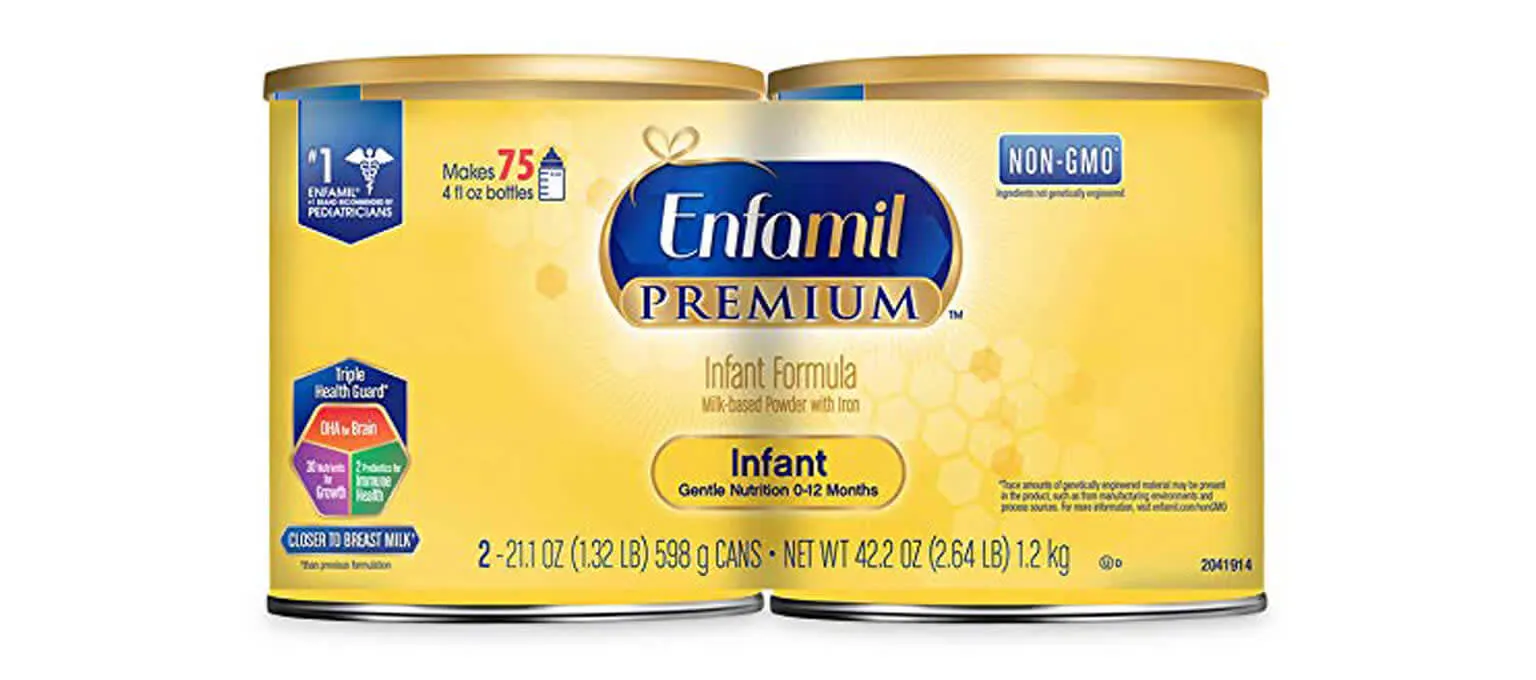
Why pick this one? This cow’s milk-based powder formula has a blend of DHA and ARA fatty acids, which are believed to help foster brain development. The makers of this formula say it’s made with the same amounts of DHA found in breast milk.
Highlights: Its “Triple Blend Health Guard” blend has 30 nutrients meant to help growth, plus prebiotics to help boost immunity.
Price*: about $56.10 for 2 packs of 21.1 ounces on Amazon.com
Pampers Parents pros and cons:
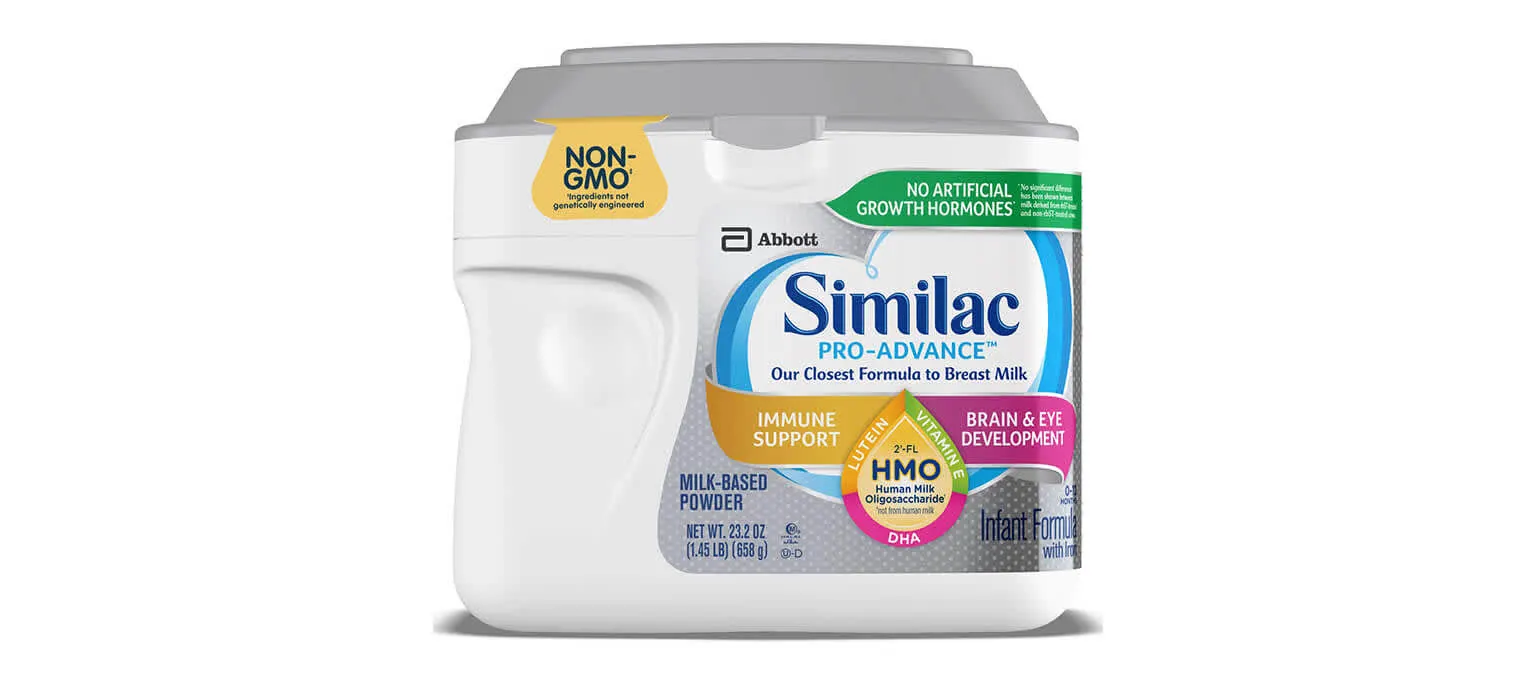
Why pick this one? The Similac Pro-Advance formula is cow’s milk-based and contains no artificial growth hormones. It’s also non-GMO. It contains Similac’s blend of DHA fatty acid, lutein for eye health, and vitamin E.
Highlights: The maker of this powder formula says this is their closest formula to breast milk because it contains the manufactured oligosaccharide 2’FL HMO.
Price*: about $28.98 for 23.2 ounces on Amazon.com
Pampers Parents pros and cons:
Similac For Supplementation Baby Formula
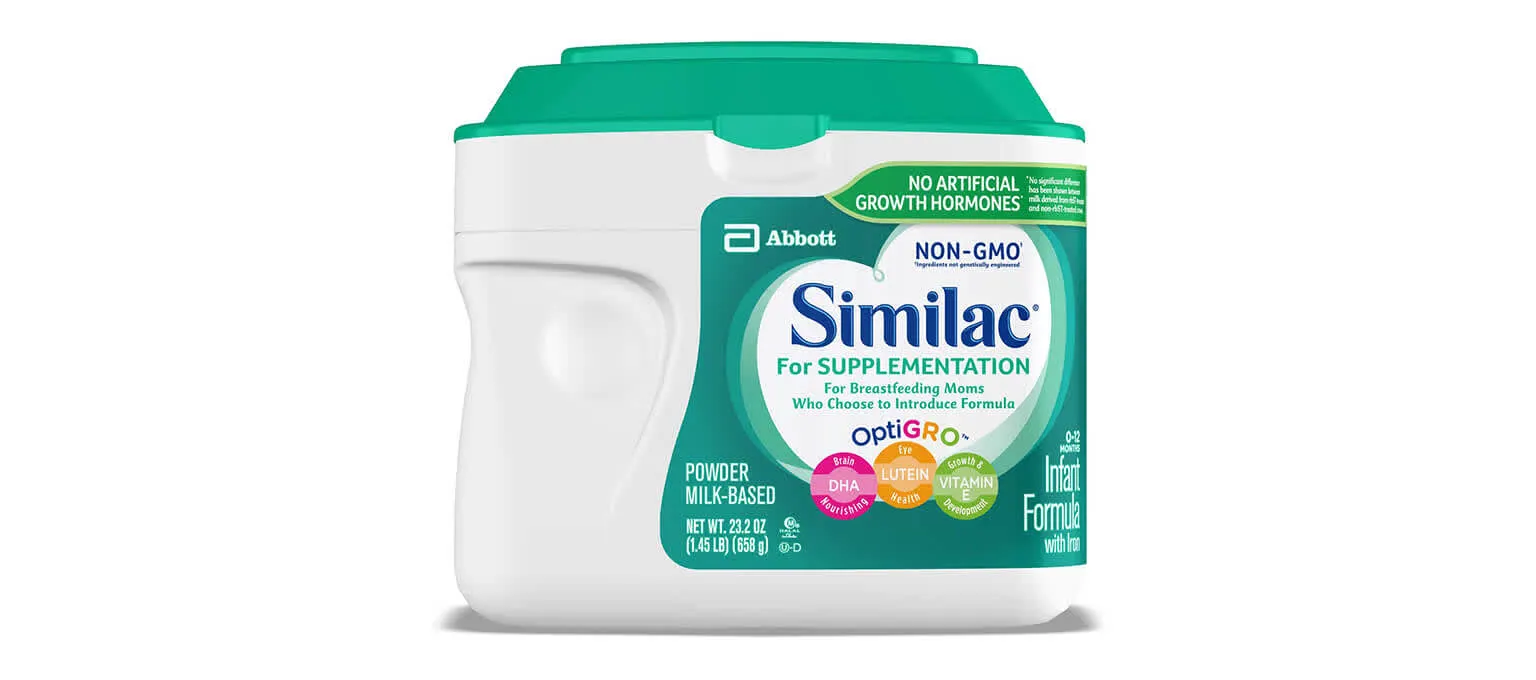
Why pick this one? The manufacturer markets this powder formula to moms who are breastfeeding and want to introduce formula into their baby’s diet. This formula has a blend of DHA, lutein, and vitamin E. This formula includes no artificial growth hormones.
Highlights: This formula contains more prebiotics than other Similac formulas. Prebiotics stimulate the growth of healthy bacteria in the digestive system.
Price*: about $103.52 for 4 packs of 23.2 ounces on Amazon.com
Pampers Parents pros and cons:
Organic Formula
Similac Organic Non-GMO Infant Formula
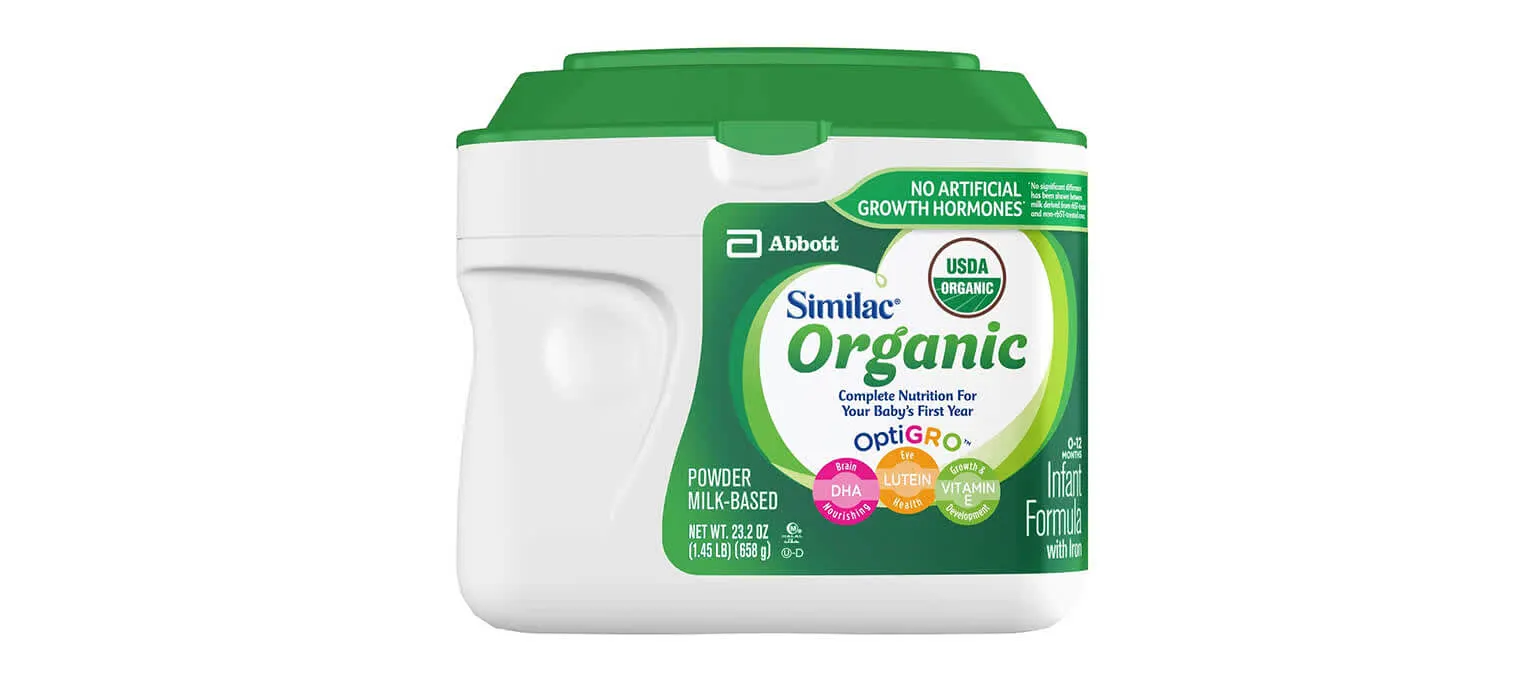
Why pick this one? This powder formula contains no antibiotics and is also non-GMO. It has Similac’s OptiGRO nutrient blend of DHA fatty acid, lutein, and vitamin E to support your baby’s overall growth, as well as eye and brain development.
Highlights: This formula is USDA-certified organic with organic cow’s milk and other organic ingredients such as organic coconut oil.
Price*: about $165.30 for 6 packs of 23.2 ounces on Amazon.com
Pampers Parents pros and cons:
Gentle, Sensitive, Low-Lactose or Lactose-Free Formulas
Similac Pro-Sensitive Baby Formula

Why pick this one? This Similac powder formula has an exclusive blend of DHA, lutein, and vitamin E. The manufacturer claims that this blend of nutrients helps support brain and eye development. This formula contains 2’FL HMO. There are no artificial growth hormones in this formula.
Highlights: This formula is for babies who are sensitive to lactose. As the formula partially breaks down the lactose, your baby’s digestive system doesn’t have to work so hard to digest it.
Price*: about $26.99 for 22.5 ounces on Amazon.com
Pampers Parents pros and cons:
Gerber Good Start Soothe Powder Infant Formula
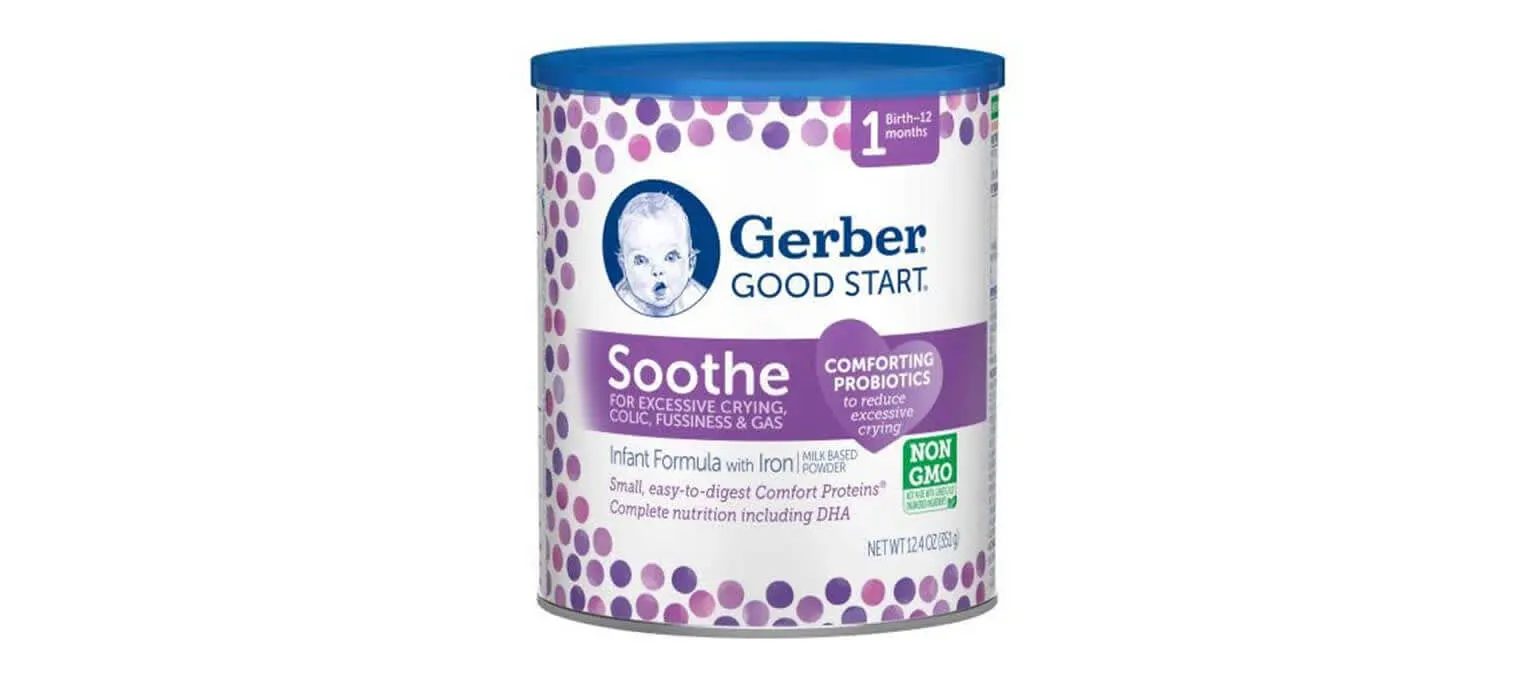
Why pick this one? This non-GMO formula includes manufactured HMO. This formula also includes L. reuteri, which is a probiotic that can help break down proteins so your little one has an easier time digesting it.
Highlights: This formula has a base of 100 percent whey protein that’s partially broken down (partially hydrolyzed) so it may be easier for your baby to digest.
Price*: about $49.24 for 2 packs of 12.4 ounces on Amazon.com
Pampers Parents pros and cons:
Soy-Based Formula
Enfamil ProSobee Soy-Based Infant Formula
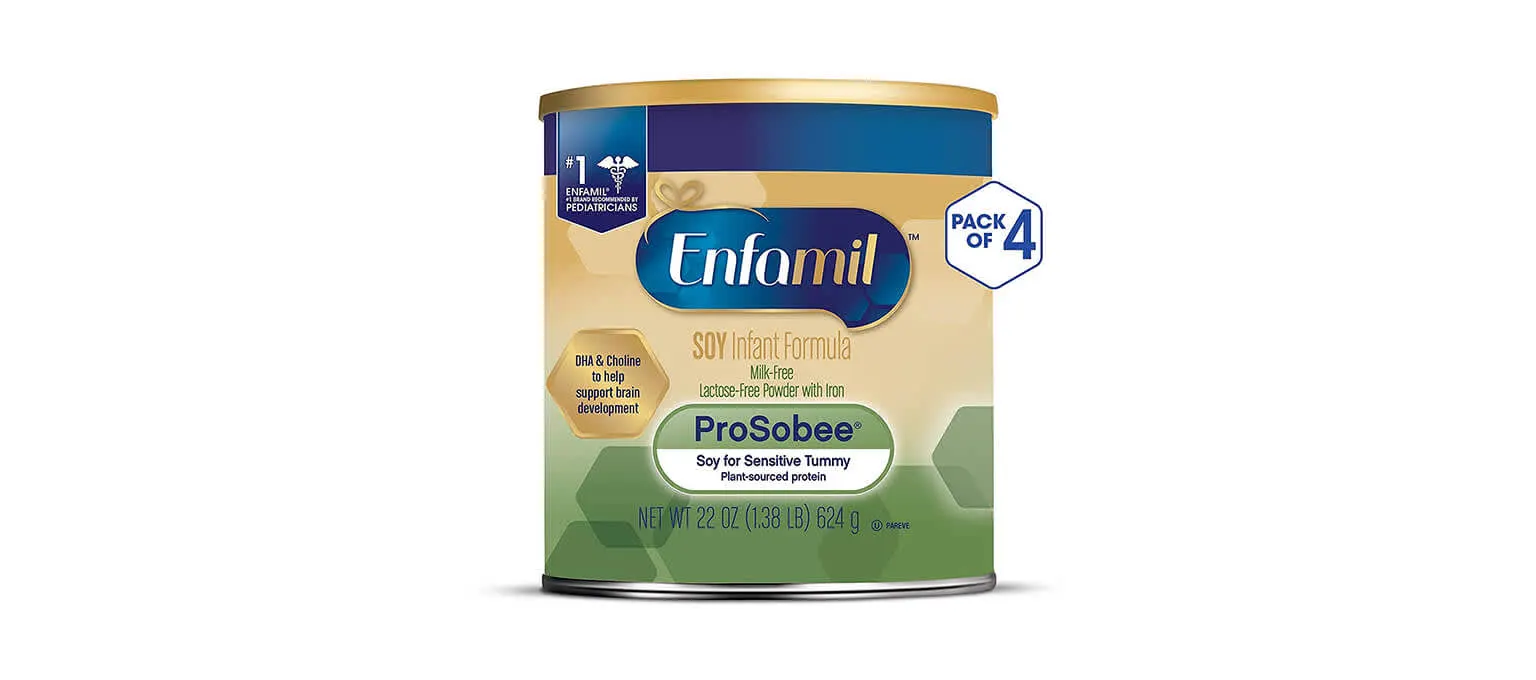
Why pick this one? This formula is formulated to be as nutritionally complete as other formulas, but with a soy base rather than a cow’s milk base. Both iron and DHA are added to this powder formula.
Highlights: This soy-based formula can be a good option if your baby has a lactose sensitivity, or if your family follows a vegetarian or kosher diet.
Price*: about $105.18 for 4 packs of 22 ounces on Amazon.com
Pampers Parents pros and cons:
Specialized Formula
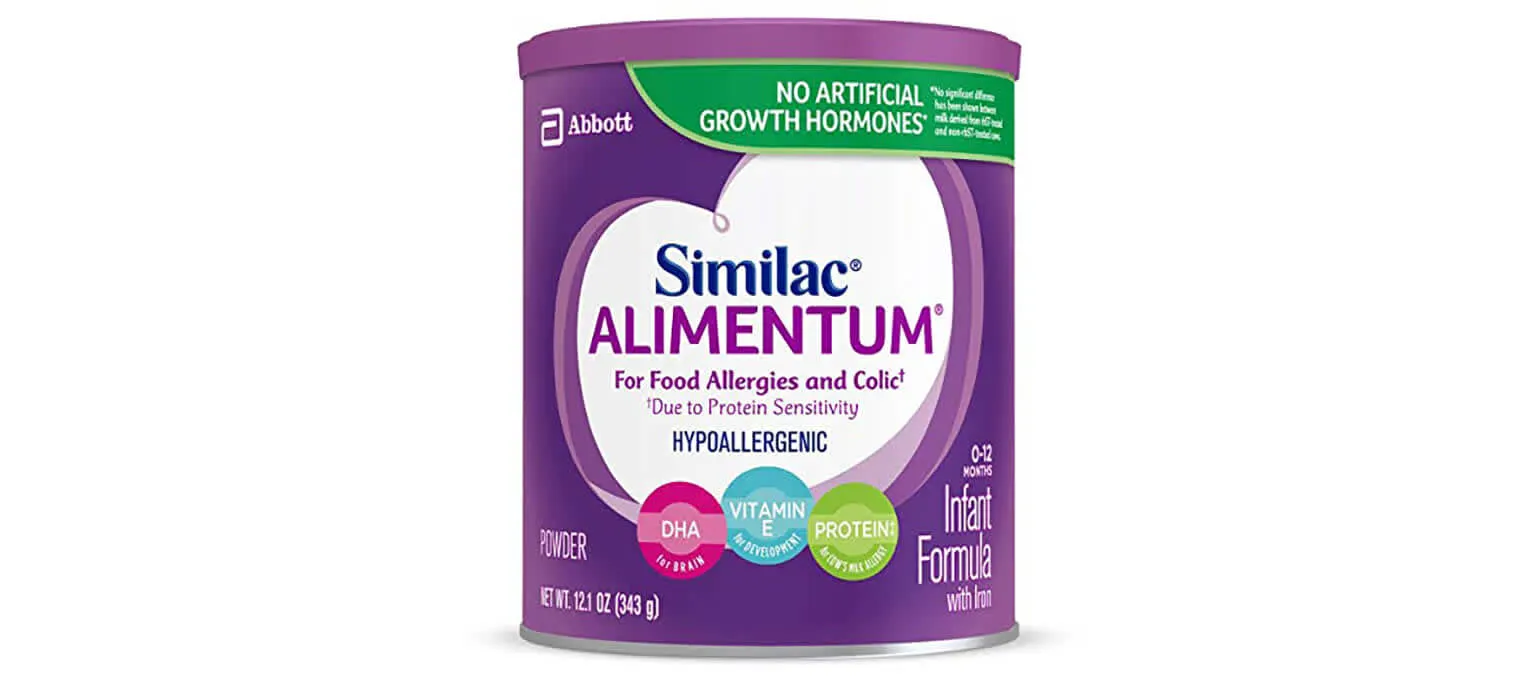
Why pick this one? This powder formula is hypoallergenic. It’s designed for babies with food allergies, such as a sensitivity to milk proteins. It contains DHA and ARA, which are nutrients found in breast milk that are said to help with eye and brain development.
Highlights: Alimentum contains predigested milk proteins (also called hydrolyzed proteins) so it might be easier for your baby to digest.
Price*: about $135.90 for 6 packs of 12.1 ounces on Amazon.com
Pampers Parents pros and cons:
Why Does Your Baby Need Formula Instead of Cow’s Milk?
You might be wondering why you can’t just give your little one cow’s milk, given some formulas are based on cow’s milk. The issue is that, without being altered as it is in formula, cow’s milk isn’t fully or easily digestible by your baby’s tummy for the first year of life.
Cow’s milk also has such high amounts of minerals and proteins that it can put too much stress on your baby’s kidneys. Additionally, cow’s milk doesn’t naturally have enough iron, vitamin C, or other nutrients that your baby needs. Finally, cow’s milk doesn’t have the types of fats your baby needs to grow.
When your baby is about 1 year old , you can introduce regular cow’s milk. She should be eating a well-balanced diet of solid foods at this point. Check with your healthcare provider about how to make the switch to cow’s milk and what a healthy diet could look like for your little one.
Although our list of formulas can give you some helpful insights on which are the top formulas based on 15,000 Pampers Parents votes, choosing the right formula can still be complicated. It’s a good idea to get some advice from your baby’s healthcare provider and to try a few different formulas to find one your baby likes. This way you can feel confident your baby is growing well and healthy.
Recall Notice
Before buying a product, always check that it’s approved and hasn’t been recalled on sites like the Juvenile Products Manufacturers Association and the U.S. Consumer Product Safety Commission (CPSC).
*Prices are correct at the time of writing.
How We Got These Results
We surveyed thousands of parents in the Pampers Community and asked them to choose the products they love the most, and to share their views on specific products and product categories. Based on the survey responses, we have taken the top product picks and added our own research to create this article. The aim is to help you choose the right product for you and your family. We might receive commissions on purchases made from the links in this article, but the products featured are the Pampers Community’s top choices.
Read more about Best Baby Products
Related Articles
Join a World of Support
through Pregnancy and Parenthood.
TRACK WITH TOOLS
LEARN WITH EXPERTS
GET REWARDED











